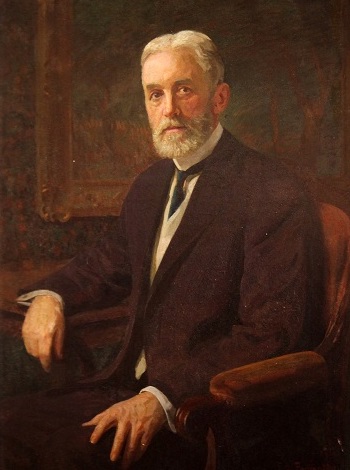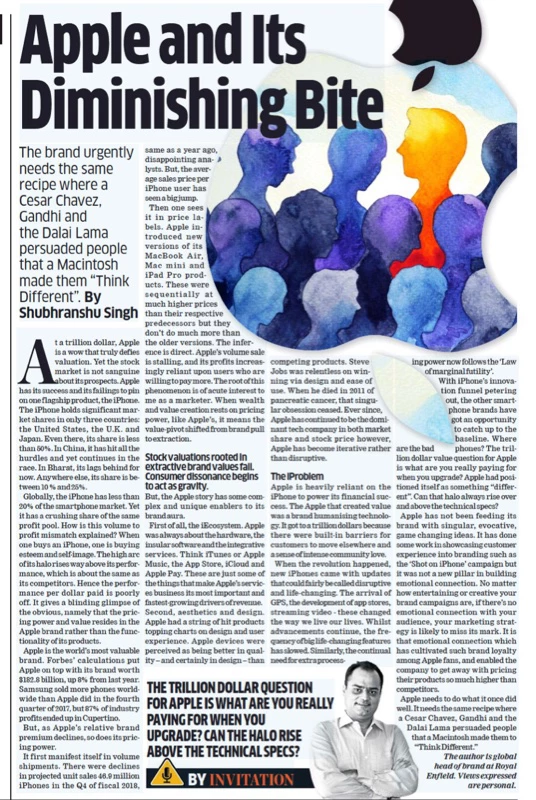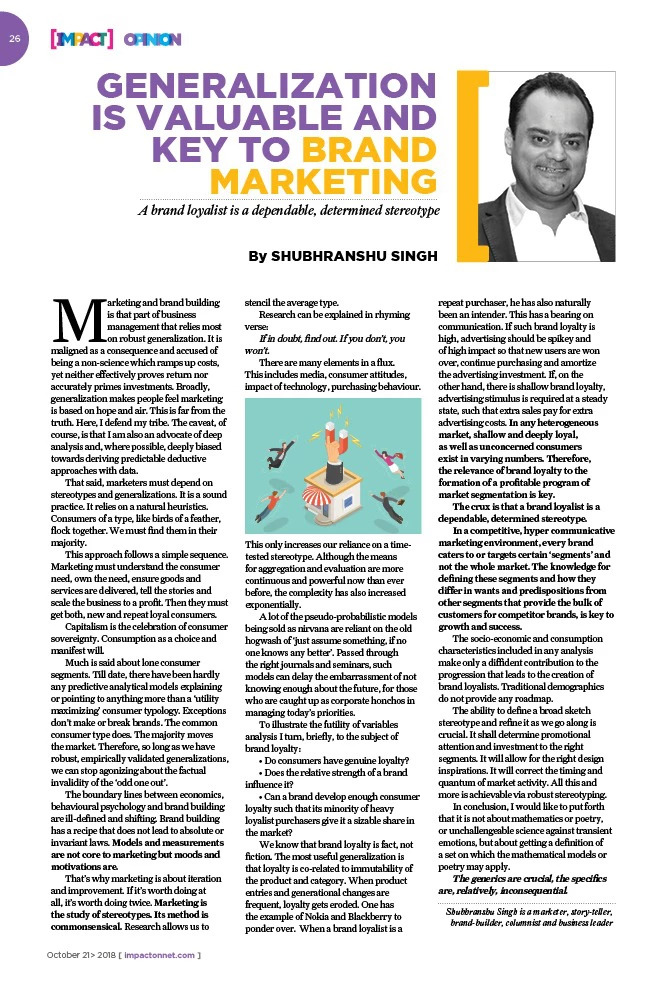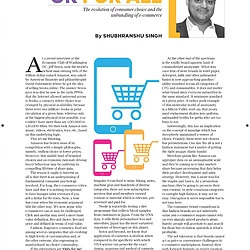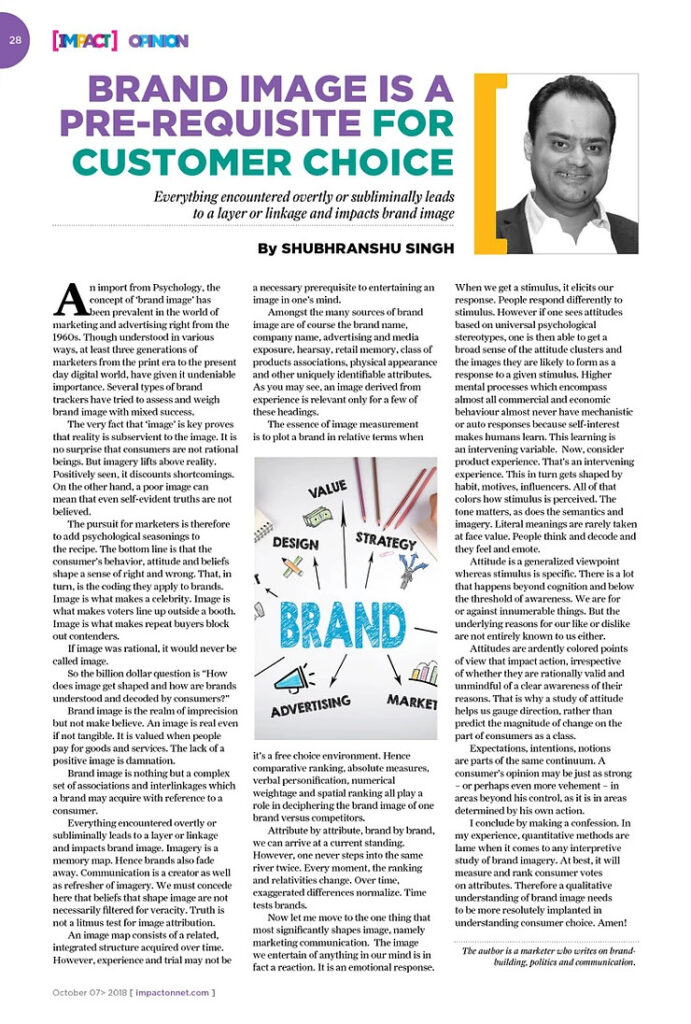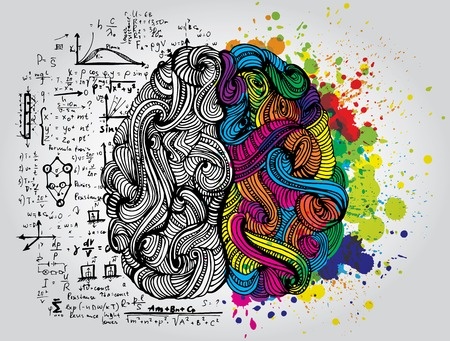To any electorate, the perception of performance matters as much if not more than the performance itself. They notice input, not intent and seem to reward effort, not outcomes. We live in a world of brands. Politics is no exception. Modern-day Indian democracy is a market place where agendas, ideologies and above all, charismatic brands are competing for share. [siteorigin_widget class=”SiteOrigin_Widget_Image_Widget”][/siteorigin_widget] A successful political brand is one that capitalizes better with the electorate. Indian democracy has been steadily witnessing to the ascendency of corporate style marketing management. The arrival of near-universal web access will accelerate this to record levels. To any electorate, the perception of performance matters as much if not more than the performance itself. They notice input, not intent and seem to reward effort, not outcomes. Voters punish the perception that the needs of the common man are not important to those who rule. On what basis is this perception currency earned for the political brand? Law and order, low cognizable crimes, high economic growth, ease of doing business, low inflation, faster employment growth, better living standards, industrial output and dozens of such indicators are ballyhooed into prominence as advertising artifacts. The perception battle has, however, now decisively shifted its focal point in our polity. From governance perceptions to personality associations, a Presidential style narrative is at play even in state elections and every result is adding or eroding individual charisma. In political branding, charisma ought to be seen in spectral terms – as personal magnetism – as an objective measure of social leverage, recognition, perceptual superiority, community standing etc. At its core is the personification of values through espousal. Certainly, factors such as personality, known trustworthiness and authenticity make voters gravitate to one or another. A charismatic leader is one who inspires you with his or her vision and has solutions to the problems. Being charismatic implies being possessed of high energy, performing actions ripe with symbolism and being seen as a visionary. Time is the main erosion agent of charisma and it needs to be constantly revitalized with sustained results. If a candidate doesn’t deliver and fails to live up to the expectations of the followers, charisma nosedives. Voters then look for someone who is different, with new qualities. As a ground condition, erosion is good because authenticity comes to play and folks want someone who won’t hesitate to tell them the truth. We live in a media hyped ‘personality’-driven world, where the connection with voters is heavily influenced by what people think of politicians and what they see of them. A natural magnetism allows one to connect with the masses but the operational challenge is to walk the talk and generate the same level of performance as magnetism. Erving Goffman, one of the most influential Sociologists of the 20th century and the father of ‘Impression management’ had the theory of dramaturgical keeping of persona in myriad quotidian interactions. The Latin word Persona itself means ‘mask’. To use Goffman’s construct, every public figure is also an actor in their own play. Each one gets to script the opening at the least. Their social image gets developed thereafter on basis of a social pact which is that the public accepts their self-presentation and judges actions against this persona based on tacit agreement. We know you are not who you claim to be but we are willing to accept the face value and judge your actions against this persona. Emotional connect has come to occupy a position of prominence when one talks about how brands are influencing our day-to-day lives. Even the worst political brands are agents of social change and their image enhances emotional connect thus making the product perform well beyond its stated functionality. That’s why perception often tides over reality. But this doesn’t last forever. Likewise, rebranding of politicians is done mostly riding on the emotional connect to help him/her improve appeal and ratings Political brands get greatly devalued when they don’t live up to the pre-poll tall claims or fall short of the promises on which they ought to deliver. The heuristics are the same as repeat purchasing for a brand. Elections are as much about the ‘electorate’ and here the declining group affinities, social fragmentation, material stresses, reversal of conventional stereotypes, emasculation of traditional authority totems have resulted in personalized politics. Collective actions have been replaced with individual expressions, often angry and polarising. This holds much relevance in our world where the politician is more popular than the party and the electorate is searching for some anchoring. Perceptions are built via intangibles – trust, emotional connect, story, priming, and mental conditioning. Contemporary political battles are fought as much in the virtual world (if not more) as they are in the real world. India witnessed the biggest election exercise in the history of mankind to elect the sixteenth Lok Sabha in 2014 when more than 553 million people – nearly twice of USA’s total population -exercised their franchise. This meant an all-time high of 67.7% voted. The high turnout had much to do with the aspirations, the hope of the consumer-citizens with the poll promises made by brand Modi which fought this election on the plank of development, employment opportunities and elimination of corruption Out of the 397 million female eligible voters, 260 million turned up to vote in the election, which is almost two-third of the total. This was the highest and best-ever turnout of female voters in a Lok Sabha election. Gender participation came to the fore as a marker of assertion in representation. It was credited that Charisma alone cut across divisions of caste, language, region, community. To conclude, a leader’s reputation is no otherworldly or divine apparition. Instead, it is a manicured and carefully cultivated face. What it becomes eventually embodies and communicates collective evaluation of the masses. In the Shanti Parva of the Mahabharata, after inquiring about all aspects of war and statecraft, Yudhishtir inquires as to what is the most precious thing for a King. Promptly comes

